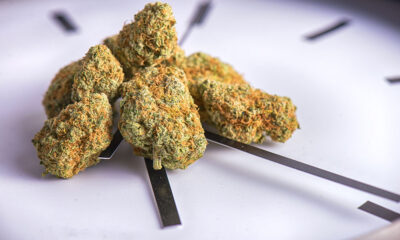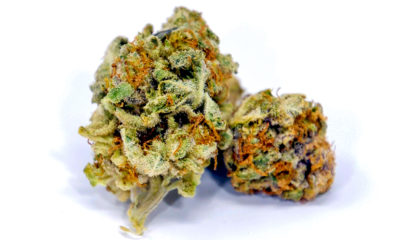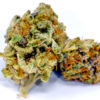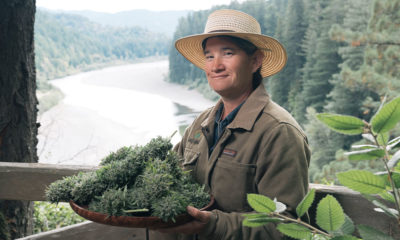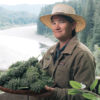
Grow
It All Starts with a Seed
From the limited genetics of the 1970s to the top-shelf clones availabilities today, the future of cannabis genetics looks bright.
If you wanted to grow your own cannabis in the 1970s, your choices for genetics were extremely limited. One could take back seed but the available Columbian, Mexican and Thai were all equatorial sativas, which were not well suited for more northerly climates. Plus, Finishing times were too long to really produce high-grade bud. During the 70s, intrepid travelers began bringing back seeds from Afghanistan. These were short, stocky indicas, traditionally used for hash production. Thus the era of skunk began.
At the time, many veteran smokers didn’t like the often stupefying effects of indica. Access to the these genetics though was mostly limited to growing regions like Northern California, Kentucky and Oregon where prized strains were jealously guarded. This era saw the first seed banks develop, with Sacred Seeds from Santa Cruz being one of the most famous. The legendary Haze strain came from these early pioneers. Dave Watson, aka “Sam the Skunkman,” was one of the key players. A bear of a man with a temperament to suit, Skunkman traveled the world bringing back seeds to California for breeding purposes.
The 1980s and the coming of the Campaign Against Marijuana Planting (CAMP) in California spurred Skunkman to go afield to Amsterdam in search of a friendlier environment to pursue his breeding work. Starting around 1984 he took seeds over and started working with Dutch breeders. These would eventually turn into Skunk # 1, White Widow and other now legendary strains.
Other early players in the seed biz include Ben Dronkers of Sensi Seeds and the infamous Nevil who founded the Seed Bank and ran his operations out of a mansion called the Cannabis Castle. This led to his being busted at the behest of the DEA who were less than thrilled by Dutch seed companies shipping to the U.S. If anyone wanted to get their hands on these seeds, it involved sending cash to Holland and hoping that the seeds would come. Amazingly, most did, finally giving the average Joe access to high quality genetics.
Breeding Pays Off
Recognizing the breeder’s hard work with awards really drove the development of the seed industry. The first Cannabis Cup was held in January of 1988 and the modern era of cannabis production begun. I was fortunate enough to attend as a photographic assistant and was blown away by the quality and abundance of high-quality flowers. Winning a cup meant you sold more seeds and each year the number of companies and the variety of strains increased geometrically. Skunk #1, Mazar and Early Girl were soon joined by Northern Lights and the first big strain fad, White Widow.
At this time in the U.S. very few people bought their herb by name. There was either commercial brown or sticky green. A cross of Brazilian and South Indian genes, White Widow was one of the first strains to change that, as people fell hard for the frosty crystal nuggets and soaring sativa high.
The 1990s saw the Cannabis Cup and seed industry grow by leaps and bounds. Indoor growing technology also developed on a parallel path. Now that anyone could get seeds, more folks wanted to try their hand at growing and hydro stores began to open nationwide. In those days one had to be very careful when buying gear as law enforcement would use credit card information and electrical usage rates to bust growers. Each year seed banks would compete fiercely to promote their businesses. The term “kind bud” and the concept of 4/20 began to circulate nationwide and people all across the land began to have better access to quality cannabis. The price of an ounce went from $200 in 1988 to $400 by 1990, in large part due to law enforcement as well as people’s appreciation of the hard work that goes into cultivating quality herb. In 1996, Prop 215 passed in California and a whole new era of access to genetics began.
The Cloning Era
The first dispensaries all carried clones, which made growing cannabis easier than ever. A patient could go into a dispensary and get an exact copy of a female plant thus shortening the grow cycle and allowing more crops per year. Thus, the modern era was born. Early favorites included White Widow, Blue Dot and, the next big fad to come along, Trainwreck.
The Oakland Cannabis Buyers Club (OCBC) and the Third Floor began to crank out massive amounts of clones and the Bay Area rapidly became the epicenter of West Coast genetics. Amsterdam was still going strong as well with Cali transplants like DNA Seeds, known for strains like LA Confidential and Martian Mean Green, began winning cups. Arjan’s Green House Seed Co. also rose to prominence although they had been around since the 90s. Arjan’s outsize personality and landrace strain hunting became the stuff of legend. Through his work, many strains have been saved and he has created multiple cup winners especially from Haze genetics.
As more dispensaries opened, the business of genetics increased dramatically. Cannabis Cups routinely drew thousands to Amsterdam every year, where folks could experience a dizzying array of offerings from breeders and coffee shops. The increasingly liberal climate in California encouraged the development of U.S.-based seed companies. DJ Short and Bushy Old Grower (BOG) were old school breeders that now had a legit market for their work and newcomers like Cali Connection entered the scene. Subcool’s TGA seeds also made their mark with perennial favorites like Jillybean and Vortex in California and beyond. Swerve, the mad genius behind Cali Connection, was the first to successfully produce seeds of the legendary OG Kush, thus helping to spread that strain far and wide. He also began to rack up an impressive string of cup wins, which helped blow his business.
As the Dutch were providing seeds to the world, our neighbors to the north were also breeding and producing top quality genetics. Marc Emery, aka “the Prince of Pot” founded his seed business in 1995 and distributed huge amounts of genetics until 2005. The Canadian police, at the behest of the DEA raided his shop and ultimately extradited him to the U.S., where he served five years in federal prison. In addition to his seed business, Emery was an outspoken activist who organized frequent protests and spoke often to the media about the lunacy of the War on Drugs.
With somewhat of a vacuum after Emery’s bust, other Canadian seed companies joined the fray. BC Bud Depot, whose God Bud and Fng incredible brought fat crystally indicas to growers in the U.S. and beyond and newcomers like Crop King all now filled the demand for new and fresh genetics.
The last few years saw many of the Dutch seed companies move their breeding operations to the sunny and more tolerant climate of Spain. In the states during this time, many new seed companies were formed. MTG, Loud and Aficionado seeds all entered the fray. Aficionado packages in fancy boxes and sell their cup winning Chem Dog for a high premium, upping the ante for the rest of the field. Aspiring beginners and pros alike have more access to better genetics than ever. The future for genetics is bright indeed.
Originally published in issue 13 of Cannabis Now. LEARN MORE.



